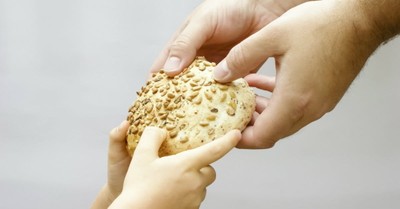Creating a Hopeful Christmas for Your Adopted Child
- Debbie Googeg The Old Schoolhouse Magazine
- Published Dec 10, 2010

Every home has its own culture for celebrating the holidays—its own family traditions, its own way of doing things. Imagine being a new visitor to a new home and being thrust into the thick of celebration their way. No one was really asking you what you wanted or cared about; however, they were expecting you to "get with it" and be happy about what was going on.
I would suppose that some things you would think were pretty good or fun, but other things you might not understand or care for at all. Most of all, I would imagine that you would miss the smells and routine of home and how Christmas was celebrated in your family. Who would ever do this to someone—just thrust a new person into such a situation—and at the holidays too? Adoptive families are often living through this scenario. Adoptive families of older children, especially during the holidays, must be sensitive to their new child, while bringing him or her into the family and making him or her a part of traditions that have been in place for years. The following seven points can help us get through a holiday fraught with emotion, keep our important family traditions, blend in our new children, and head off most major blow-outs.
The first step is to take into account a new child's background. As much as this would be helpful to new parents, in actuality it can be difficult, if not impossible, to achieve. Our family adopted two toddlers through the foster care system. The oldest child was 2½ years old. She was not able to verbalize to us what Christmas might have been like at her house. The only clue we had was when she saw some Christmas decorations in a store and was enthralled with them. When I commented that it was almost time for us to get our decorations out, she looked astonished and excited that "we were going to have some in our house!" The most important thing to be mindful of is that adopted children were adopted for a reason. In Parenting the Hurt Child, Regina Kupecky and Gregory Keck say that "we simply want to make it clear that most adoptable children—regardless of their country of origin—have experienced trauma."[1] Christmas is such an emotionally charged season; we can assume that this time of year for an adopted child was either a horrible event or a bright spot in a desperate life.
Don't assume they are just going to get it. We become so used to the way our family does things that we assume everyone does it that way, or that once it is explained, they will just get it and go along. When I lived in Argentina, the family I was staying with did not have any particular Christmas colors and actually preferred pastels. It was really hard for me to grasp this, and I finally convinced them to add some red and green to the decorations. Such a small thing as colors had a big impact on me, and I was a healthy, secure, attached teenager on an exchange trip. I really did not feel that I could just go along without at least trying to insert something that would remind me of home. Taking into account that our adopted children have likely been traumatized in some way, their memories of Christmas may not be as simple or pleasant as colors or stockings. It may not be necessary or possible to give the child something to help him, but it will be important to acknowledge that it is difficult to have everything different.
A child does not have to participate in every event. In our family we have the motto that readiness does not depend on age. Emotional age and chronological age are not always equivalent. Children who have experienced trauma in their past often have needs of a younger emotional age. Parents need to discern the ability of their children to handle the events of the holidays. One Christmas two of our children were starting to "get worked up," and it was almost time to decorate the house. I was sure we were going to have mass chaos at decorating time. Instead of chancing major fall-out, I chose to schedule the decoration time to take place after the children were in bed. Not to leave out my older children, I allowed them to stay up later to help me. I laid out some things that belonged to the younger children.
The next morning there was a lot of oohing over the pretty house, and the younger children were allowed to decorate with their items, which I had laid out. This turned our decorating into a happy and peaceful time for all the children—a good, warm memory instead of an issue of chaos and discipline.
Keep gifts to a minimum. Too many gifts can cause a whole host of negative issues. Children who have come from a past of deprivation cannot handle an influx of so much all at once. It is overwhelming. They will often find it difficult to appreciate gifts, which could produce feelings of guilt. One of our daughters felt guilty because she was put up for adoption when some of her siblings were not. There was no sure way for us to get items to her birth family, and so she felt guilty because of what she had and was receiving.
We have tried all kinds of ways to celebrate with gift giving—some have been very successful and some have been "learning adventures." The last and most successful idea was a code system. I told the kids they would get one keepsake item and one gift. Then I wrapped all of the packages the same way and put numeric codes on them instead of names. It created anticipation and a fun, game-like atmosphere as everyone tried to break the code. They did not receive many gifts but had great fun together.
Maintain priorities of Christ and relationship. As fun as the gift giving can be, our focus needs to be placed on Christ first and on building relationships. We always do an activity called the Jesse Tree. It is an Advent activity lasting twenty-five days and covers Creation to Christ. Each day we hang a small item on an ornament holder and read a passage of Scripture. We also participate in church functions and sometimes even find a live nativity to attend. With our focus on Christ, we also want to build family relationships. Pictures are a good way to build the family identity. We decorate the house together; we also make gifts for Sunday School teachers or other special people in our lives.
Surprise isn't always fun. Understand that stress will bring out behaviors you thought were overcome. "A number of parents have told me that as their adopted toddlers grew older, they still tended to revert to the same misguided survival behaviors they displayed as young children when they were in new or otherwise stressful situations."[2] Christmas is a very stressful event with the break in routine, buildup to gifts, visitors, or travel. Sometimes it may become necessary to remove some of the surprise element so that the anxiety level doesn't escalate. One year we gave our children a set amount of money to spend. We took one day to shop together. We gave everyone plenty of time to look for special items. Then we went out to a big dinner afterwards. The next day we had a wrapping party with all the gifts. Everyone knew what they were getting for Christmas, but that occasion is one of our favorite memories.
Be ready to give comfort for sadness and grief. Christmas may trigger lots of thoughts and memories about birth relatives. In the midst of the celebration, the adopted child may actually be experiencing large doses of grief. If you can be comforting, it will help your child cope and may help bring you closer as you understand his or her conflicting emotions.
Christmas is such a warm and much-anticipated event celebrating Christ and family and memories, but for an adoptive family it can be one of the hardest seasons to get through. Approaching Christmas with a deeper understanding of what your adopted child may be going through can help you plan wisely. In the end we want the hope of Christmas to really live in all of our children's hearts. As the authors of Parenting the Hurt Child say, "They just might come to view the world as a place filled with infinite opportunities for them and a giving, hopeful environment in which to live."[3]
This article is excerpted from the 2010 Digital Holiday Supplement from The Old Schoolhouse® Magazine. You can enjoy the full supplement by clicking here.
Debbie and Jerome Googeg have been married twenty-three years and live in New Knoxville, Ohio, with their six kids, an old dog, and occasionally a batch of chickens. They are quite a tribe, walking in faith and learning as they go. Debbie maintains a family blog at www.thegoogegs.blogspot.com.
[1] Keck, Gregory C., Regina M. Kupecky, Parenting the Hurt Child: Helping Adoptive Families Heal and Grow (Colorado Springs, Pinon Press, 2002), 15.
[2] Hopkins-Best, Mary, Toddler Adoption: The Weaver's Craft (Indianapolis, Perspectives Press, 1997), 219.
[3] Keck, Gregory C., Regina M. Kupecky, Parenting the Hurt Child: Helping Adoptive Families Heal and Grow (Colorado Springs, Pinon Press, 2002), 15.



















